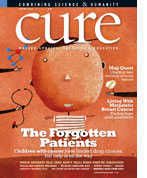Childhood Cancer Survivors at Increased Risk for Heart Problems
Childhood cancer survivors are at higher risk for heart disease.
A new analysis from the Childhood Cancer Survivor Study (CCSS) found that survivors have a five- to 10-fold increase in the risk of heart disease in early adulthood when compared with their healthy siblings. In early June, researchers from the University of Minnesota presented their findings at the annual meeting of the American Society of Clinical Oncology in Chicago, noting the while the risk was still small, were concerned that survivors may not be adequately monitored for heart problems after treatment.
Initiated in 1993, the CCSS includes data from more than 14,000 childhood cancer survivors diagnosed under age 21 between 1970 and 1986 and about 4,000 sibling controls, making it the largest study of childhood cancer survivors.
Survivors self-reported heart conditions, which showed a 10 times greater risk for atherosclerosis (hardening of the arteries); 5.7 times greater risk for congestive heart failure; 4.9 times greater risk for myocardial infarction (heart attack); 6.3 times greater risk for pericardial disease and 4.8 times greater risk for valvular disease.
Incidence of heart disease 30 years after diagnosis was 4 percent for congestive heart failure, 2 percent for atherosclerosis, and 1 percent for heart attack. Cases of pericardial disease and valvular heart disease reached 3 and 4 percent, respectively, totaling 1,030 total cardiac events in the survivor group.
“Proportionately these numbers are relatively low, but yet notably excessive when compared to the sibling control group,” said lead researcher Daniel Mulrooney, MD, during his presentation of the results at the annual meeting of the American Society of Clinical Oncology. Dr. Mulrooney, assistant professor of pediatrics at the Masonic Cancer Center, University of Minnesota, noted a third of the survivors studied were under 40.
Survivors treated with heart-damaging chemotherapies, such as anthracyclines, and radiation therapy to the chest were at a higher risk compared with survivors who didn’t receive these treatments.
Previous CCSS results have found survivors at increased risk of secondary cancers, infertility, and kidney failure. Because of the arrival of targeted therapies and improvements in radiation therapy, it is believed the risk of many of these long-term and late effects is lower in survivors diagnosed in the past 20 years.
The importance of studies examining the long-term and late effects of childhood cancer treatments has grown, especially as the five-year survival rate for childhood cancers reaches about 80 percent today and there are more survivors of childhood cancers alive now than at any other time, with about 300,000 in the United States alone. The CCSS studies have led to an increase in long-term planning and monitoring of survivors’ health and working toward preventing such damaging effects.
For more information about the Childhood Cancer Survivor Study, visit the National Cancer Institute.
